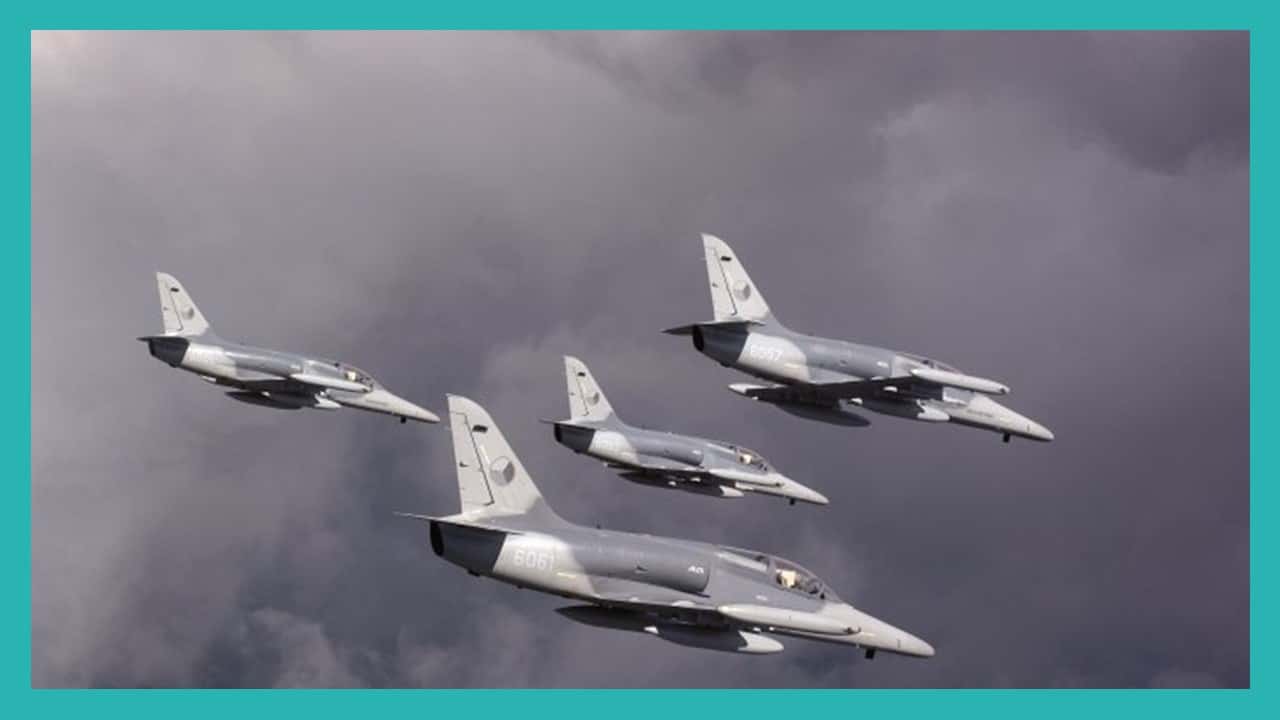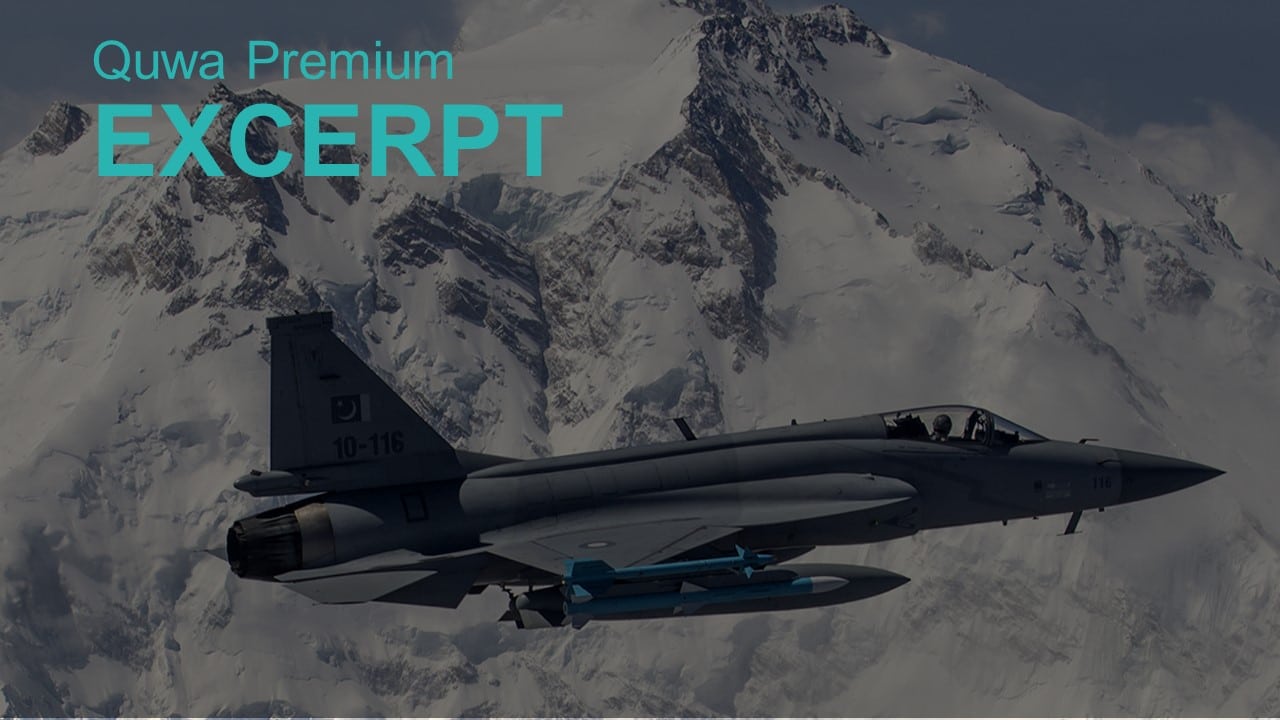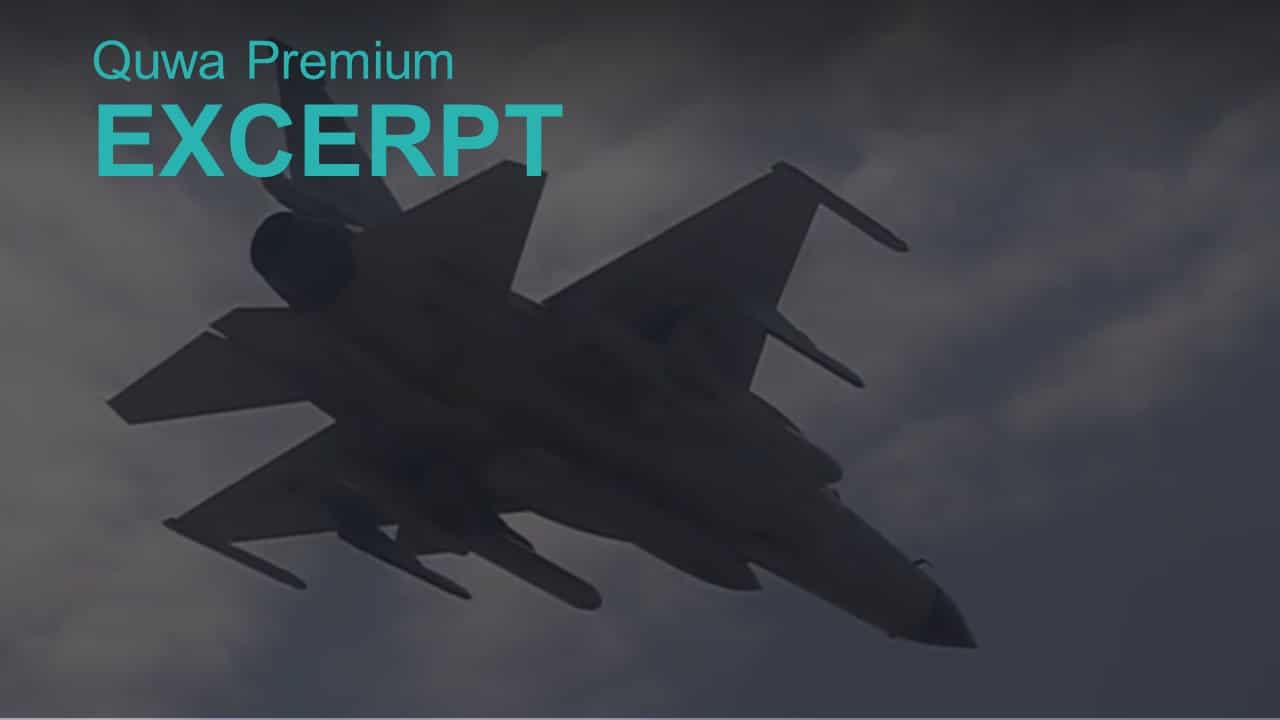312Views 0Comments

Why Pakistan is unlikely to procure a lead-in-fighter-trainer (LIFT)
Quwa Premium Sample:
The following article is a free and complete Quwa Premium sample for all readers. At Quwa, we make a concerted effort to provide high-quality, detailed and timely research and analysis of current Pakistani defence and security issues.
Although we largely rely on open source information, we offer analytical depth and insights that are not readily available in free media. Moreover, we offer our services to our readers at an accessible monthly (no term commitment) price of $10 USD with unlimited access to past articles.
Every subscriber enables us to add a notch to our research and analysis capabilities, thus adding more value with every newly published article and report.
For more details, see our registration page.
Why Pakistan is unlikely to procure a lead-in-fighter-trainer (LIFT)
On December 11, 2017 the Pakistan Air Force (PAF) inaugurated a new lead-in-fighter-training (LIFT) unit to prepare pilots for transitioning to the JF-17 and F-16, which form the mainstay of the PAF fighter fleet. Reported by Pakistan’s Inter Services Public Relations’ (ISPR) through its monthly Hilal magazine, the new LIFT unit – designated “Shooter Squadron” – will be stationed at PAF Base M.M. Alam, located in Mianwali.
In his speech for the inauguration event, PAF Chief of Air Staff (CAS) Air Chief Marshal (ACM) Sohail Aman outlined that “the pilots being trained [in Shooter Squadron] should adapt to an exhaustive academic and flying curriculum under the supervision of the finest of the instructor pilots.”
Hilal describes the LIFT unit as “an innovative idea of establishing a temporary flying squadron which would serve as a lead in fighter training … this squadron would give the future [pilots] enough confidence to ultimately undergo their conversions [on the F-16 and JF-17].”
The PAF had been examining the idea of raising a dedicated LIFT unit since at least 2015, when the current CAS told Air Forces Monthly that it had examined numerous LIFT platforms.[1] In general, LIFT aircraft are platforms designed to acclimate new pilots to fast jets in the lead-up to their conversion on frontline aircraft. For the PAF, the objective of procuring a LIFT aircraft was to ease the process of converting new and less-experienced pilots to the JF-17 or F-16 from the F-7P/PG and Mirage III/5 sooner (i.e. 250 hours instead of 400-500 hours in prior years).[2]
However, ACM Aman had outlined that LIFT platforms, particularly the Korea Aerospace Industries (KAI) T-50 and the Hongdu L-15, were relatively costly to acquire and operate.[3] The CAS hinted of using the JF-17B dual-seater in the role, but in May 2017, aviation journalist Alan Warnes was told by the PAF CAS that the PAF would use the F-7P and FT-7P for the role. He added that the JF-17B would not be used as a LIFT.[4] Based on photos from Shooter Squadron’s inauguration event, this appears to be the case.
By stationing this unit at PAF M.M. Alam, it is possible that the PAF is using aircraft from its No. 18 Squadron – designated “Sharp Shooters” – which has been an operational conversion unit (OCU) for the F-7P and is equipped with both F-7P and FT-7P aircraft. In terms of outcomes, committing to the F-7P and FT-7P for LIFT duties should result in cost-savings over off-the-shelf LIFT procurement. However, it is unlikely to remain as the permanent solution due to aircraft age and the difference in subsystems and capability between the F-7P/FT-7P and the JF-17 and F-16.
On the surface, one might believe that the PAF is setting the stage for a new LIFT aircraft in the long-term. However, historian, analyst, writer and retired PAF fighter pilot Air Commodore (AC) Kaiser Tufail told Quwa that he believes that a specific or tailor-made LIFT platform is unnecessary:
“I think the LIFT concept is a marketing ploy … If a student has undergone jet training in an advanced trainer with a glass cockpit, and a speed around 300 knots, [the pilot] should be ready to move onto the F-16 and JF-17 via their respective dual versions. A dedicated LIFT aircraft would not be required when we have enough JF-17B available. It would be a waste of money to invest on an aircraft with limited operational value vis-à-vis a proper fighter aircraft.”
AC (retired) Tufail added that the objective of this unit is likely to provide flying experience to new pilots amid dwindling overall numbers of F-7P and Mirage III/5 (due to the induction of the JF-17):
“(This ‘Shooter Squadron’) unit suggests some kind of new idea about operational conversion on to mainstream fighters, the F-16 and JF-17. However, to me it appears no more than an extended OCU course on the F-7/FT-7 to give the students more flying experience on a fighter that is simple to fly. This experience was earlier gained in F-7 and Mirage squadrons, but with these fighters being phased out at the rate of about one per year, there is hardly any effort available to continue operational training of rookie fighter pilots. I think that this scheme will be followed till we have enough JF-17B … It is apparently a temporary arrangement.”
In effect, the PAF is breaking from the widespread trend of other air forces, which is to induct a specialized lightweight trainer to acclimate new pilots to the cockpit environment and aerodynamic traits of modern combat fighter aircraft. While such procurement may seem sensible for air arms comprising of costly high-tech aircraft – such as the Dassault Rafale and Eurofighter Typhoon – as their mainstay fighters, it is a non-essential and potentially redundant procurement for the PAF, which already possess a fighter platform that is relatively close in overall technical specifications to these platforms – the JF-17B. The first prototype of the JF-17B flew in April 2017. Of the three prototypes, two will be sent to PAC for further tests.[5]
In terms of imported LIFT aircraft, the PAF would have had two sets of options: first, large LIFT aircraft such as the KAI T-50 Golden Eagle, which are close in technical and performance parameters to lightweight multi-role fighters such as the JF-17 and second, smaller LIFT powered by 28-30 kN turbofan engines, such as the Leonardo M-346 (dual-engine) or Aero Vodochody L-159 (single-engine).
In terms of acquisition and life-cycle costs, the JF-17B will be more cost-effective than the KAI T-50, which had cost Iraq $45 million U.S per aircraft (including support costs).[6] However, the issue of cost is not just tied to the nominal price-tag, but the fact that most of an imported LIFT’s cost will be spent overseas from production to after-sale maintenance and support. This is not a tenable outcome for Pakistan, which is trying to preserve its dwindling foreign-exchange/hard currency reserves.
From a technical standpoint, the KAI T-50 is not markedly different in specifications to the JF-17. The T-50 has a maximum take-off weight (MTOW) of 12.3 tons and empty weight of 6.47 tons against the JF-17’s MTOW and empty weight of 13.5 tons and 6.59 tons, respectively. The T-50 has a maximum speed of Mach 1.5 against Mach 1.6 of the JF-17, while the G-limit/load-factors are both similar at -3/+8 g.[7],[8] In fact, the T-50 is even powered by the General Electric F404 turbofan engine, which is in the same general weight and thrust-class of the Klimov RD-93 powering the JF-17.[9] Given the similarities, there is little reason for the PAF to procure the T-50 instead of the JF-17B, the latter is the more cost-effective option.
Smaller LIFT platforms – e.g. Leonardo M-346, Aero Vodochody L-159, Hongdu L-15 and Yakovlev Yak-130 – will not necessarily cost less. There could be upfront price differences between the latter set and the T-50, but once the total cost-of-ownership is factored in (aligning with the cost of overseas production and hard-currency outflows), these are likely to be just as costly as the T-50. For example, the 20-year unit cost of each M-346 could reach $65 million for Israel.[10] Even if the cost-of-ownership of the JF-17 is similar (which it is unlikely seeing the cost differences of labour and materials between Western Europe and that of China and/or Pakistan), the JF-17 – by virtue of being co-owned by Pakistan – would see a sizable portion of that expenditure spent within Pakistan. There is the contractual work share agreement which requires 58% of the JF-17 to be sourced from Pakistan.[11] This will translate into production work for PAC. In addition, the life-cycle cost will mostly be spent in Pakistan as well through PAC’s overhaul facilities and ability to produce some of the spare parts. This would both reduce hard-currency outflow and serve as a stimulus to the domestic economy, providing PAC (and/or the Pakistani private sector) with continued work in terms of both production and after-sale support.
One could argue that small single-engine LIFT aircraft, particularly the Aero Vodochody L-159 and BAE Systems Hawk 128, would not be redundant. In fact, the L-159 and Hawk 128 – each powered by a single turbofan engine with a 28-29 kN thrust-rating – would sit between the PAF’s K-8 and JF-17B (the K-8’s Honeywell TFE731-2A-2A has a thrust of 16 kN). However, it may not be necessary to have such an aircraft. As discussed by AC (retired) Kaiser Tufail earlier, pilots should have the aptitude to undertake OCU training with F-16 and JF-17 units after completing their FCU course on the K-8 Karakoram. For the PAF, inserting another platform would simply be redundant. Rather, the issue is one of accumulating experience, which does not require a specialist trainer, but more frontline aircraft – i.e. aircraft with combat utility.
With smaller platforms, there will be clear limits in range and payload. In the case of the T-50, there is the risk of it costing as much – if not more – to operate as a JF-17, but having restrictions in the way of weapons and subsystems configuration. The T-50 is compatible with munitions from U.S. companies, such as Raytheon. This is a non-starter for the PAF given the generally tenuous state of U.S.-Pakistani relations, especially from the standpoint of gaining approval to integrate American weapons to non-U.S./third-party platforms. Customizing the T-50 to alleviate this issue will add to the cost, further diminishing its value proposition to the PAF. In the case of the JF-17B, it has no barrier to deploying the SD-10 beyond-visual-range air-to-air missile, Range Extension Kit stand-off weapon and C-802 anti-ship missile, all of which are already in use by the PAF’s JF-17s. In wartime, the JF-17B can function as a complete combat asset and seamlessly support the PAF’s other JF-17s by sharing the same support infrastructure.
Selecting an imported LIFT could also be a negative factor for the JF-17 to prospective foreign customers. The original equipment manufacturers (OEM) of LIFT platforms are marketing their respective trainers as lightweight multi-role fighters, with the KAI FA-50 and Leonardo M-346FA being prime examples. Selecting an imported LIFT could reduce confidence in the JF-17 on the part of prospective customers, especially in the developing world (i.e. cost-sensitive customers). Rather than buying into these LIFT platforms, the PAF could be better served by contesting their overall value – i.e. the relatively high acquisition and life-cycle cost associated with aircraft that are less capable frontline fighters than the JF-17 (e.g. M-346FA) or are beset with supplier constraints on configuration options (e.g. the T-50). In turn, the PAF can position the JF-17 and JF-17B as an alternative set with lower costs and greater flexibility in use and customization.
The industry will continue its push for LIFT platforms, but to the PAF these LIFT aircraft are neither optimal for training or for combat, they are comprised on both fronts. Compared to pure training platforms (such as the K-8), LIFT platforms are markedly costlier to procure and operate, yet are lesser assets in a conventional wartime situation. The KAI T-50 is technically similar in its size and capability to the JF-17, which makes this and other larger LIFT aircraft redundant to the PAF.
Finally, even in terms of the JF-17B, the PAF does not appear to view it as a LIFT – rather, it is for OCU. As the PAF is not looking for another training platform, it will acquire additional JF-17s to supplant its aging F-7P/PG and FT-7P/PG (wherein older JF-17s can serve the role of providing experience so that pilots can later transition to the more capable Block-III and so on). For the PAF, the issue is less of having another platform to “bridge” the FCU and OCU and more of ensuring that the FCU stage provides sufficient training to new pilots so that they can readily acclimate to the JF-17, F-16 and, further in the future, the next-generation fighter being developed under Project Azm. Currently, it appears that the PAF is satisfied with the K-8 as its FCU system. However, as the K-8s age through the long-term, the PAF could consider a comprehensive upgrade along with a service-life extension-program (SLEP).
The Czech Republic’s Aero Vodochody is offering this dual SLEP and upgrade package for in-service L-39s under the L-39NG program. The L-39NG offers a new and more efficient turbofan engine, a digital glass cockpit with three large multi-function displays (MFD), head-up display (HUD) and hands-on-throttle-and-stick (HOTAS), night-vision along with the ability to simulate air-to-air and air-to-ground combat.[12] The PAF has the option of emulating the L-39NG model for the K-8. This could result in upgrading the K-8’s cockpit environment, making it similar to that of the JF-17 and further easing the OCU process. PAC could also commercially offer the upgrade to other existing K-8 operators, which could generate commercial returns and foreign-currency in-flows for Pakistan. Besides remanufacturing and integration work, these gains can also be had by indigenously providing the necessary subsystems for the aircraft.
[1] Alan Warnes. “Exclusive interview with new Pakistan Air Force Chief: PAF’s Cutting Edge Grows.” Air Forces Monthly. June 2015. Issue #327.
[2] Ibid.
[3] Ibid.
[4] Ibid.
[5] Alan Warnes. “Dubai Airshow: Pakistan JF-17 returns to Dubai.” Arabian Aerospace. 13 November 2017. URL: http://www.arabianaerospace.aero/dubai-airshow-pakistan-jf-17-returns-to-dubai.html (Last Accessed: 14 January 2018).
[6] Bradley Perrett. “Iraq Orders 24 KAI T-50s For 2016-17 Delivery.” Aviation Week. 13 December 2013. URL: http://aviationweek.com/awin/iraq-orders-24-kai-t-50s-2016-17-delivery (Last Accessed: 14 January 2018).
[7] Promotional Material. “T-50 Family.” Korea Aerospace Industries. URL: http://www.koreaaero.com/english/product/fixedwing_t-50.asp (Last Accessed: 14 January 2018).
[8] Specifications of the JF-17 can be found on Quwa. Information is from Pakistan Aeronautical Complex (PAC) | Bilal Khan. “Profile: AVIC-PAC JF-17 Thunder.” Quwa. 31 August 2017. URL: https://quwa.org/2017/08/31/profile-avic-pac-jf-17-thunder/
[9] Ibid.
[10] Tamir Eshel. “Israel’s New Jet Trainer Could Cost More Than $60 Million per plane, over 20 Years.” Defense Update. 03 January 2013. URL: http://defense-update.com/20130103_iaf_m346_life_cycle_cost.html (Last Accessed: 12 January 2018).
[11] Alan Warnes. “JF-17 Thunder: Pakistan’s Multi-Role Fighter.” Pakistan Aeronautical Complex/Pakistan Air Force. June 2015. (Promotional material for the 2015 Paris Air Show).
[12] Promotional Material. “L-39NG Next Generation” URL: http://www.l-39ng.cz/main-features/design-features/#scrollTo=tabs&tab=avionics-upgrade (Last Accessed: 14 January 2018).


